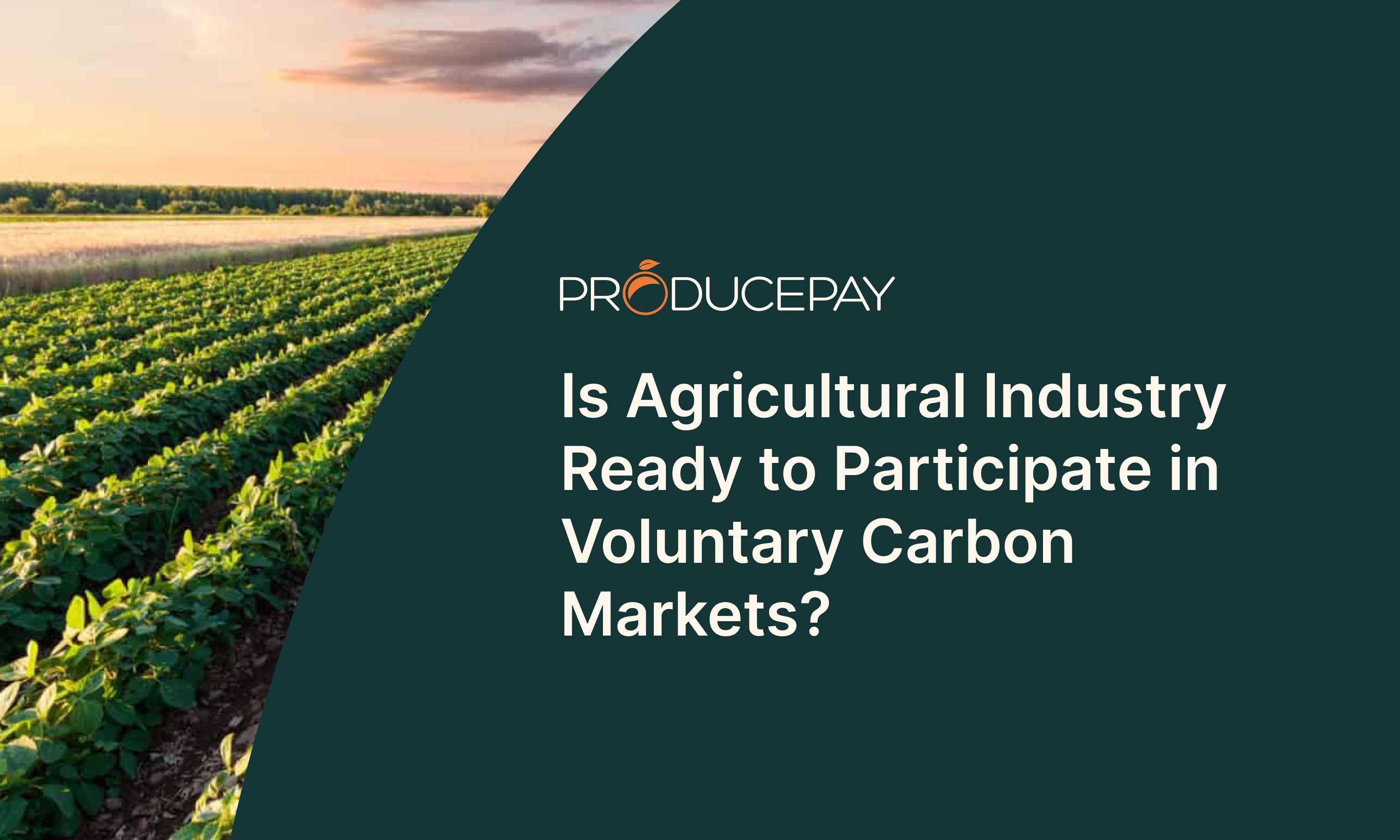
Is Agricultural Industry Ready to Participate in Voluntary Carbon Markets?
Carbon markets emerged as a response to the alarming increase in greenhouse gas emissions during the last decades, which made evident the need to take measures that mitigate such impact and contain global climate change.
In this regard, scientific evidence indicates that human activities are accelerating the concentration of greenhouse gases in the atmosphere, which has a negative impact on people’s health, but also endangers their food security by directly affecting food production.
How is the carbon market implementation progressing?
The first step towards the implementation of carbon markets was taken in 1992, during the United Nations Framework Convention on Climate Change, an event in which the participating countries committed to stabilize greenhouse gas emissions by taking measures to anticipate, prevent or minimize the causes of climate change.
Subsequently, in 1997, during the signing of the Kyoto Protocol, the structure and operation of carbon markets was defined to promote in developing countries investment projects related to the mitigation of greenhouse gas emissions into the atmosphere, in order to obtain additional economic income through the sale of carbon credits to companies.
In 2021, there were 64 carbon pricing instruments in the world (covering 21.5% of global emissions), the main ones being emissions trading (within carbon markets) and carbon taxes, and regarding carbon markets, there exist compliance and voluntary markets.
Although carbon markets have existed for more than two decades since their conception, their implementation is extremely complex, as it requires the action of multiple parties involved. However, in recent years there has been an increasing interest, both by the authorities responsible for public policies and by the industry’s decision makers, in this case the agricultural industry.
Voluntary carbon markets in the United States
When analyzing the carbon markets in which a country participates, in this case the United States, it should be taken into account that there are two mechanisms that operate at the same time: 1) international carbon markets in which companies or organizations from that country participate, and 2) local markets that only operate within the country.
In the United States, one of the most important voluntary carbon markets is the Verified Carbon Standard (VCS), with 1,808 certified projects and where agriculture is one of the 16 productive sectors accepted. There is also the Climate Action Reserve (CAR) of California, which was created in 2008 and has more than 55 registered projects, many of them related to agriculture.
In the United States, however, voluntary markets are being driven by the boom in compliance markets, such as California’s Cap-and-Trade, the fourth largest carbon market in the world, surpassed only by the markets of China, the European Union and South Korea. The reason is that many carbon mitigation projects are still left out of the compliance markets, whose requirements are stricter, implying a great opportunity for the appearance of more voluntary carbon markets.
Additionally, it is important to mention that 9 out of 10 projects on the continent are currently located in the United States, with an area of 1,330 hectares, not a considerable area, which undoubtedly indicates that both compliance and voluntary carbon markets are just beginning to emerge.
Voluntary carbon markets in Latin America
In Latin America, the leading countries in the implementation of carbon pricing instruments are Chile, Colombia, Mexico and Argentina, and although these countries account for a total of seven different carbon taxes, voluntary carbon markets in agriculture are still absent.
However, the first pilot projects are already emerging, which in turn are driving the establishment of regulatory frameworks in these countries. In fact, Mexico currently has a pilot program for a carbon market, in which companies with more than 100,000 tons of annual emissions participate, although it is aimed at the energy sector and others, such as the automotive, cement, metallurgy, petrochemicals, etc., leaving agriculture out.
It is worth mentioning that more and more companies in the region are interested in buying carbon credits to offset emissions in their operations and supply chains, which is undoubtedly interesting, as the sellers’ share is being surpassed by that coming from buyers, meaning that the main challenge in the coming years will be to meet the demand.
Furthermore, several specialists agree that Latin America has an enormous potential in terms of carbon markets, although the lack of public policies to promote this type of mechanisms is currently a major limitation. Even though the situation is expected to improve over the next decade, especially considering the pressure that private sector companies are exerting on governments.
In fact, companies in the agricultural sector are leading this pressure, as there is great interest among agri-food value chains to participate in carbon markets, as it is increasingly becoming evident that agricultural players can earn significant revenues from the sale of carbon credits.
What does agribusiness need to participate in carbon markets?
The European Union is the pioneer region in the carbon market development, followed by the United States and Canada, and more recently Asia. In this sense, it is expected that Latin America will soon become the next relevant region for carbon markets.
The region is actually preparing for this, since the climate targets for reducing the carbon footprint are clear for most countries, and certain initial legislative changes have already been introduced to trigger a major change, and of course, they also have the experience of Canada and the U.S. to define what has worked and why.
Naturally, the agricultural industry has everything it needs to lead the development of carbon markets on the continent, in addition to the fact that reducing the agriculture carbon footprint is essential to meet the commitments of the Kyoto Protocol.
In this regard, there are already companies conducting tests, by paying farmers to voluntarily establish sustainable agricultural practices, such as crop rotation, cover crops, anaerobic digesters, vegetative strips, tree planting and conservation tillage, practices that aim to improve soil health and reduce its erosion, mainly.
However, to have the desired impact, these carbon offset programs must be scaled up and included in a carbon market, so that all efforts can be regulated and tracked.
In addition, the existence of carbon markets allows the entry of more people interested in trading carbon offsets, which is why organizing by region or by crop will be a key factor for success, thus ensuring that all participants in agri-food chains can access a carbon market.
ProducePay and its commitment to agricultural sustainability
At ProducePay we want to reduce the carbon footprint in supply chains, for which we have partnered with ALLCOT, a strategic alliance that aims to promote the first Carbon Offset Program in the fresh produce sector (fruits and vegetables) of the agricultural industry.
This will enable buyers of fresh produce to achieve their carbon reduction goals and drive agricultural sustainability, while producers can generate additional income as carbon offsets providers, motivating them to produce in an increasingly sustainable way.
Sources: Green Finance LAC and Deloitte

